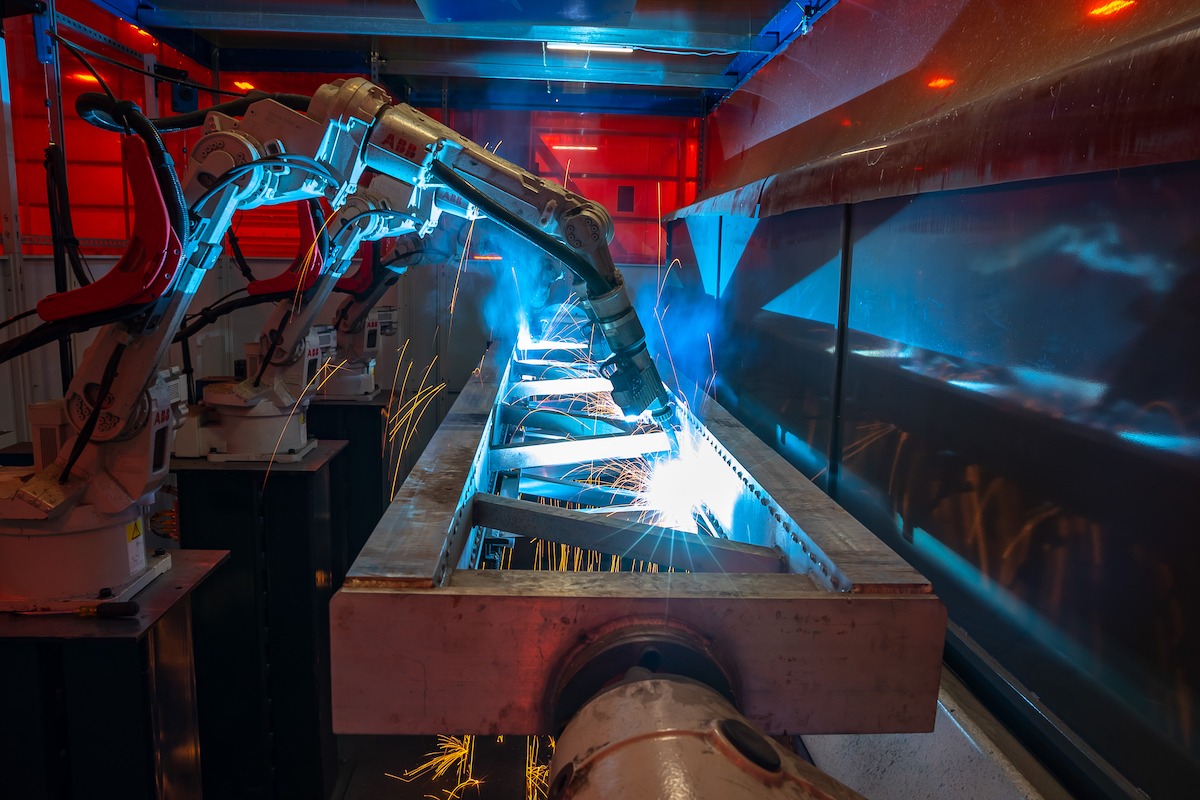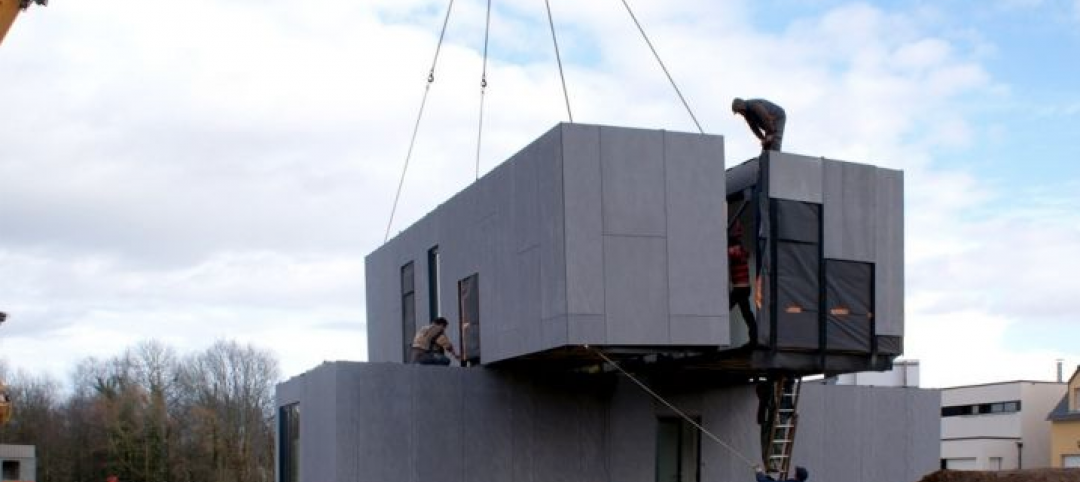Is it “prefab”? “Modular”? “Offsite manufacture”? Call it what you will, industrial construction is a concept that is capturing the imagination of AEC firms, developers, entrepreneurs, and investors. Amazon has pumped $6.7 million into Plant Prefab, which has a 62,000-sf factory in Rialto, Calif. Katerra is gearing up to have five factories, notably a 250,000-sf mass timber facility in Spokane, Wash. New York City alone has more than 30 modular projects under way.
Thinking about trying industrial construction? Do your homework first, advises EJ Olbright. Before engaging with industrial constructor Prescient, the Founder/CEO of CFC Construction says he “canvassed every local project they had done, talked to every contractor, engineer, and architect who had worked with them, and came up with a list of 125 suggestions that could be applied to improve our projects with them.”
ALSO SEE: The epic rise of industrialized construction
Chief among them: getting Prescient’s light gauge steel walls to connect precisely with the concrete podiums in apartment projects. “Their steel walls are perfect”—Prescient claims they’re accurate to 1/32 of an inch—“so you need the concrete to be nearly perfect, too, because slab flatness and embed elevation and placement are critical to success,” says Olbright.
CFC Construction had weekly meetings with Prescient CEO Magued Eldaief, developer Cypress Real Estate Advisors, and Cypress’s architects. The group also toured Prescient’s factories in Arvada, Colo., and Mebane, N.C.
These meetings helped resolve the items on Olbright’s checklist. “Magued was very open to finding solutions,” says Olbright. The discussions further prompted Prescient to create a modular stair system and a standardized elevator structure that it is incorporating into new projects.
CFC Construction is using Prescient on three apartment projects in Denver for Cypress: the 14-story Golden Triangle and 13-story Jefferson View (both designed by Meeks + Partners) and the eight-story Denargo 3 (designed by GFF Architects).
Following are cameos of Prescient, Robins & Morton, and Skender, plus their expert advice on industrial construction.
Prescient: Staying way outside the box
Prescient was founded in 2012 by structural engineer Michael Lastowski and real estate developer John Vanker, two industry veterans who felt there had to be a better way to build buildings.
In just the last few years, Prescient has produced $1.1 billion in building inventory—about 5,600 apartments, student residence units, and hotel rooms, in 12 states. It has 10 million sf of backlog, with another 13 major deals totaling 3.9 million sf and valued at $860 million under way.
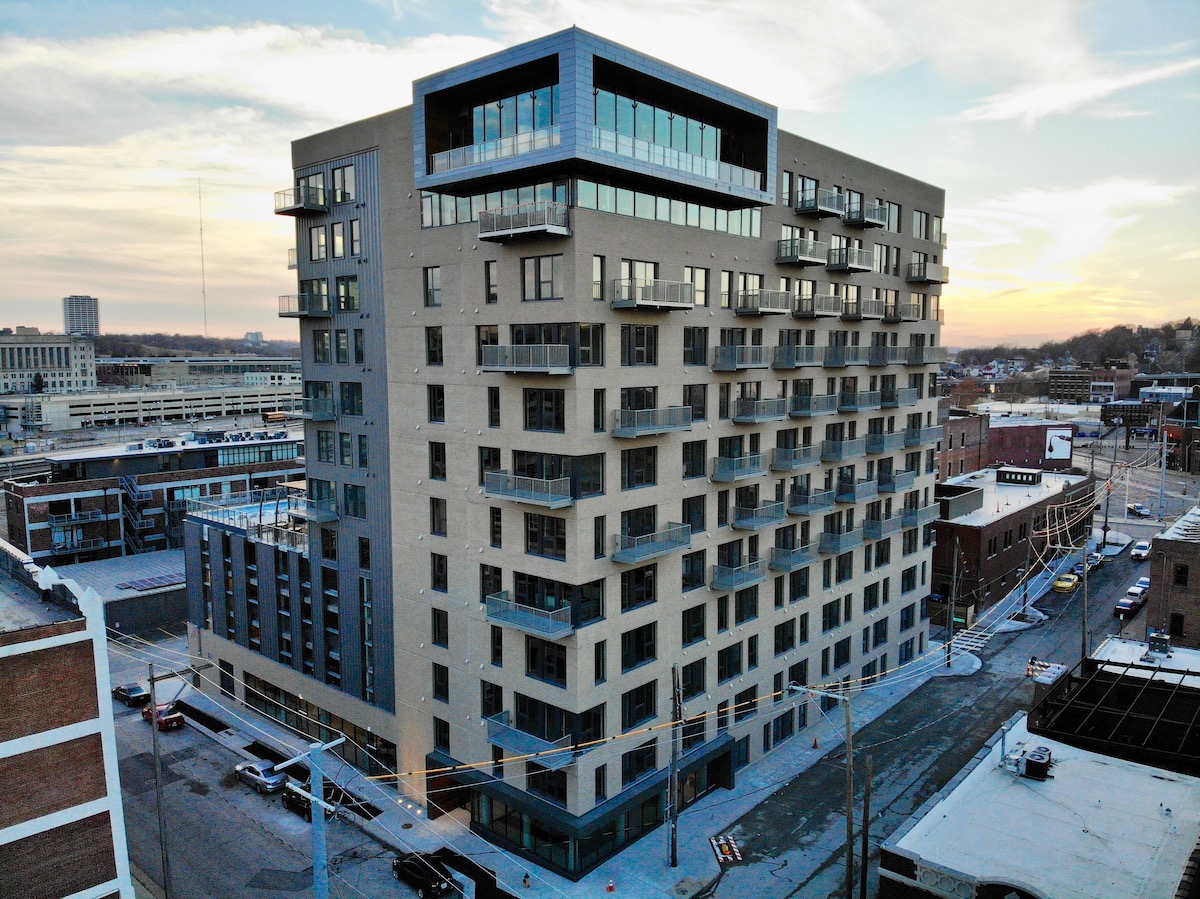 Prescient supplied >100,000 sf of structure for ARTerra, a 12-story, 126-unit apartment building in the Crossroads Arts District of Kansas City, Mo. The 200,000-sf building was designed by HOK; JE Dunn Construction was the GC. Altus Properties and Copaken Brooks developed the $40 million project. Photo courtesy Prescient
Prescient supplied >100,000 sf of structure for ARTerra, a 12-story, 126-unit apartment building in the Crossroads Arts District of Kansas City, Mo. The 200,000-sf building was designed by HOK; JE Dunn Construction was the GC. Altus Properties and Copaken Brooks developed the $40 million project. Photo courtesy Prescient
The company has attracted gold-standard developers like Trammell Crow Residential, The Michaels Organization, and CA Student Living, as well as a host of top-flight design and construction firms.
Prescient’s approach differs from that of other prefab manufacturers in two significant ways. First, it doesn’t build modules. It builds entire steel wall assemblies that designers can configure in thousands of ways to create virtually any kind of enclosure.
Prescient’s other distinction: “We’re one-third software and engineering, one-third advanced manufacturing, and one-third assembly and installation,” says Magued Eldaief, a General Electric executive who was brought in as CEO by Chairman Satyen Patel two years ago.
Prescient’s proprietary software, Digital Thread, is the brainchild of the company’s S&E unit in Poland. (Why Poland? It has major universities brimming with highly qualified, eager engineering grads, says Todd Meckley, LEED AP, EVP of Design.) The software runs the company’s Unified Truss Construction System, its light-gauge and cold-rolled steel structural system and framing technology. All told, Prescient has amassed 75 patents on its technology; another 63 are pending.
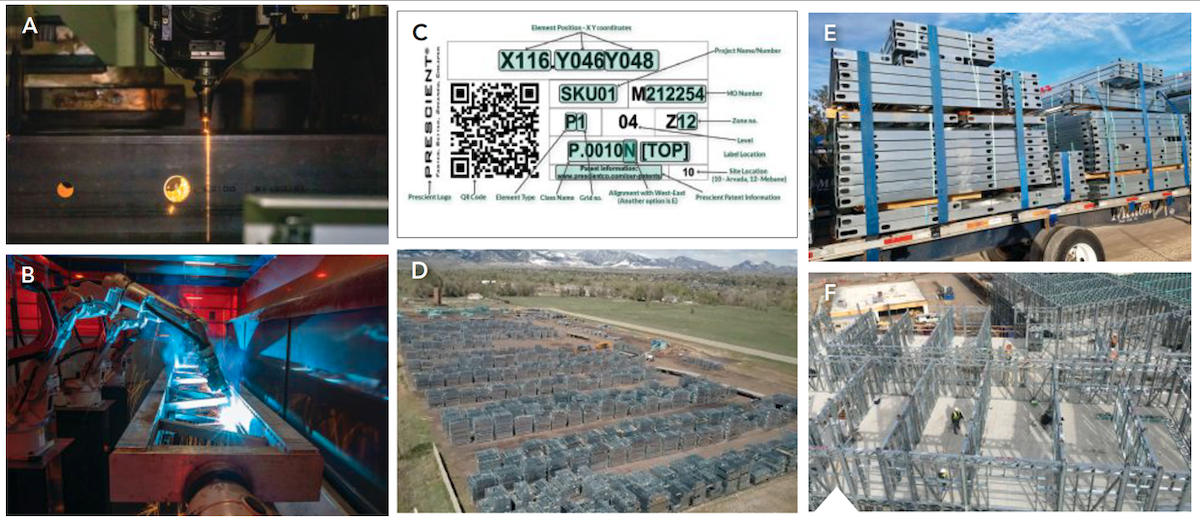 Prescient’s 5D “Digital Thread” program guides A) laser drilling, B) robotic welding, C) QR coding, D) storage of finished panels at a 10-acre site in Colorado, E) trucking to the project, and F) installation at the site. Photos courtesy Prescient
Prescient’s 5D “Digital Thread” program guides A) laser drilling, B) robotic welding, C) QR coding, D) storage of finished panels at a 10-acre site in Colorado, E) trucking to the project, and F) installation at the site. Photos courtesy Prescient
It’s really a simple system, says Meckley. “We’ve got no more than a dozen components—posts, panels, trusses, floor decking, connections, all standardized. We don’t have tons of inventory laying around. Our procurement logistics team has 20 or 30 trucks on the road at any time doing just-in-time delivery. We’re always first in, first out.”
Prescient’s light-gauge panelized framing system is capable of going up to 12 stories without the use of concrete or hot-rolled steel (Type II construction). The system can be constructed over a five-story podium, up to 180 feet.
Next up for Prescient: The Golden State. “We’re working to get our buildings certified to 12 stories in seismic regions,” says Eldaief. “That will open up California to us.” It is partnering with Clark Building Group on a project encompassing 1.3 million sf of space at the University of California, Davis. New plants in Nevada and Texas are under serious consideration.
As for new building types, Eldaief sees senior living, workforce housing, and military barracks as likely candidates. “We’re also talking to some medical players to do something on a big, replicable scale,” he says.
Robins & Morton ‘manufactures’ an 11-story children’s hospital
General contractor Robins & Morton is just a few weeks away from completing the Shawn Jenkins Children’s Hospital & Pearl Tourville Women’s Pavilion for the Medical University of South Carolina (MUSC), Charleston. Many of the building’s systems were fabricated in an 80,000-sf warehouse 15 miles from the 11-story, 635,000-sf hospital.
Gopi OmRaju, CEM, MUSC’s Senior Project Manager for Facilities & Capital Improvements, says, “We had a tight site [3.6 acres] and a tight schedule,” so the healthcare system was looking for innovative construction methods. Robins & Morton won the contract, he says, largely because “they came to the table with prefab experience and a team of trade partners who had done some prefab. That really appealed to us.”
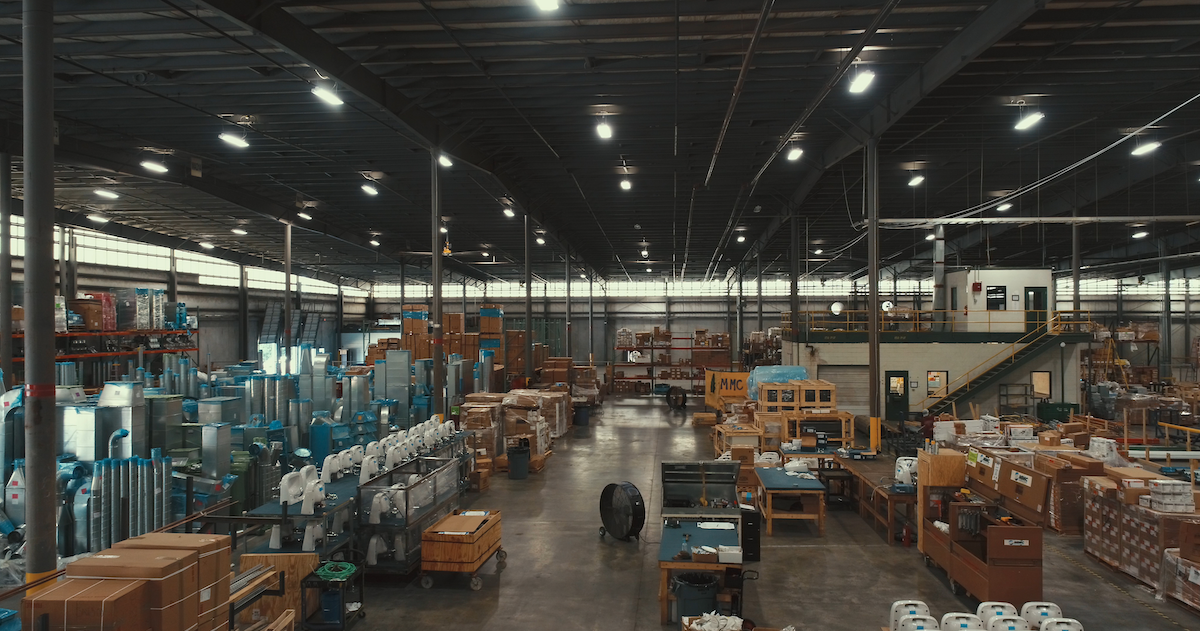 The 80,000-sf warehouse where major components of the Shawn Jenkins Children’s Hospital & Pearl Tourville Women’s Pavilion (below) in Charleston, S.C., were prefabricated. Photos courtesy Robins & Morton
The 80,000-sf warehouse where major components of the Shawn Jenkins Children’s Hospital & Pearl Tourville Women’s Pavilion (below) in Charleston, S.C., were prefabricated. Photos courtesy Robins & Morton
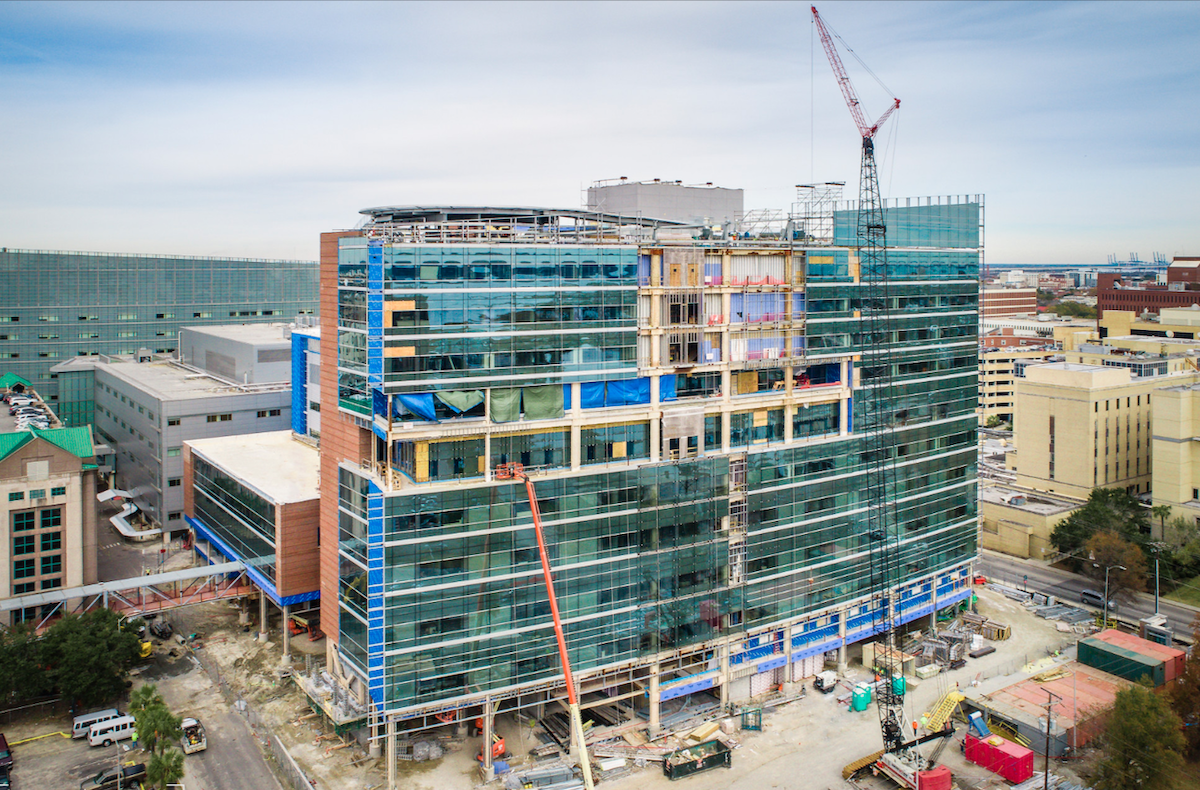
Steve Wiley, Senior Project Manager with Robins & Morton, says, “We had done some prefab in Florida and Maine, and we pitched the idea of a prefab warehouse. We worked more than a year getting the budget in place, and we had a team coordinating the Revit model with our trade partners on a design-assist basis to see what systems we could manufacture.”
Two strategies were off the table from the start. The hospital had a separate contract for headwalls, and there were too many different bathroom configurations to make prefabrication feasible.
Still, three-fourths of the MEP, lighting, and drain assemblies, and all of the sinks, were made off site. Door hardware was set in place at a local supplier warehouse, so finished doors could be installed upon delivery.
The offsite prefab initiative involved up to 10 subs at a time. The sheet metal contractor, Tech Air, assembled ductwork in 10- to 15-foot sections to form larger assemblies. “The connections in the ductwork were made on a bench at waist-high level versus up in the air 10, 20 feet,” says Kevin Robinson, Tech Air’s Operations Manager. “Prefab made our quality much better.”
OmRaju says MUSC will apply the know-how from the hospital prefab experience to a medical office building and an ambulatory surgicenter that are in the works.
The 250-bed complex, built at a cost of $256 million ($389 million total), will be completed in May, nearly a year ahead of schedule. It will open in October.
Skender: Gearing up prefab for multiple building types
Chicago-based Skender expects to have its 105,560-sf factory on the city’s southwest side in operation in Q2/2019. The 64-year-old GC firm has 15 prefab projects in design, including pods for hospital patient rooms, bathrooms, and exam rooms, apartment buildings (3-12 stories), hotels, and infill three-flats.
The factory will produce modules ranging in size from 10x12 feet (for the healthcare pods) to 15x40 feet (for residential projects).
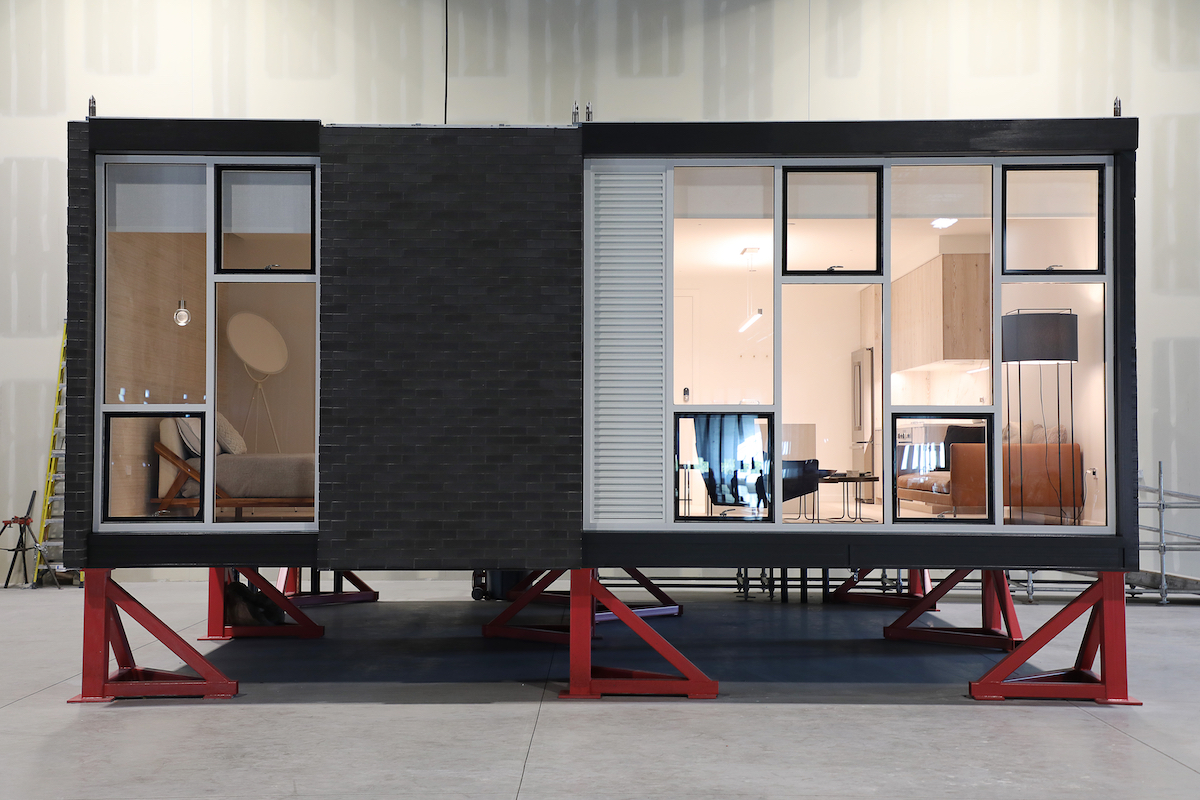 A “smart” apartment prototype on display in Skender’s Chicago factory. The steel-frame module uses the Z Modular/VectorBloc, a Lego-like steel connection system that “pins” the modules together. Factory production will allow assemblies to be held to a tolerance of 1/16 inch, says Skender’s Pete Murray. Photos/renderings: Skender
A “smart” apartment prototype on display in Skender’s Chicago factory. The steel-frame module uses the Z Modular/VectorBloc, a Lego-like steel connection system that “pins” the modules together. Factory production will allow assemblies to be held to a tolerance of 1/16 inch, says Skender’s Pete Murray. Photos/renderings: Skender
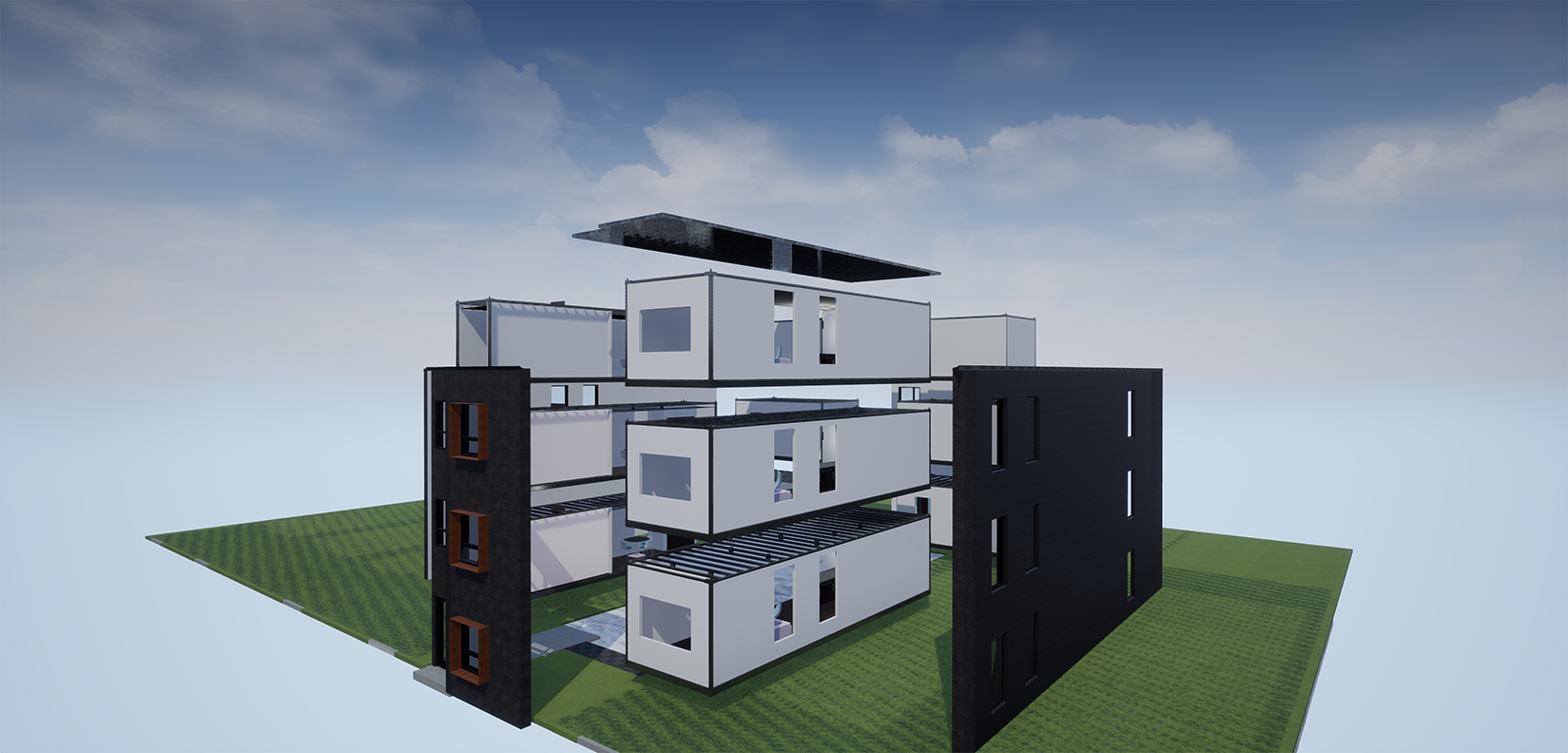
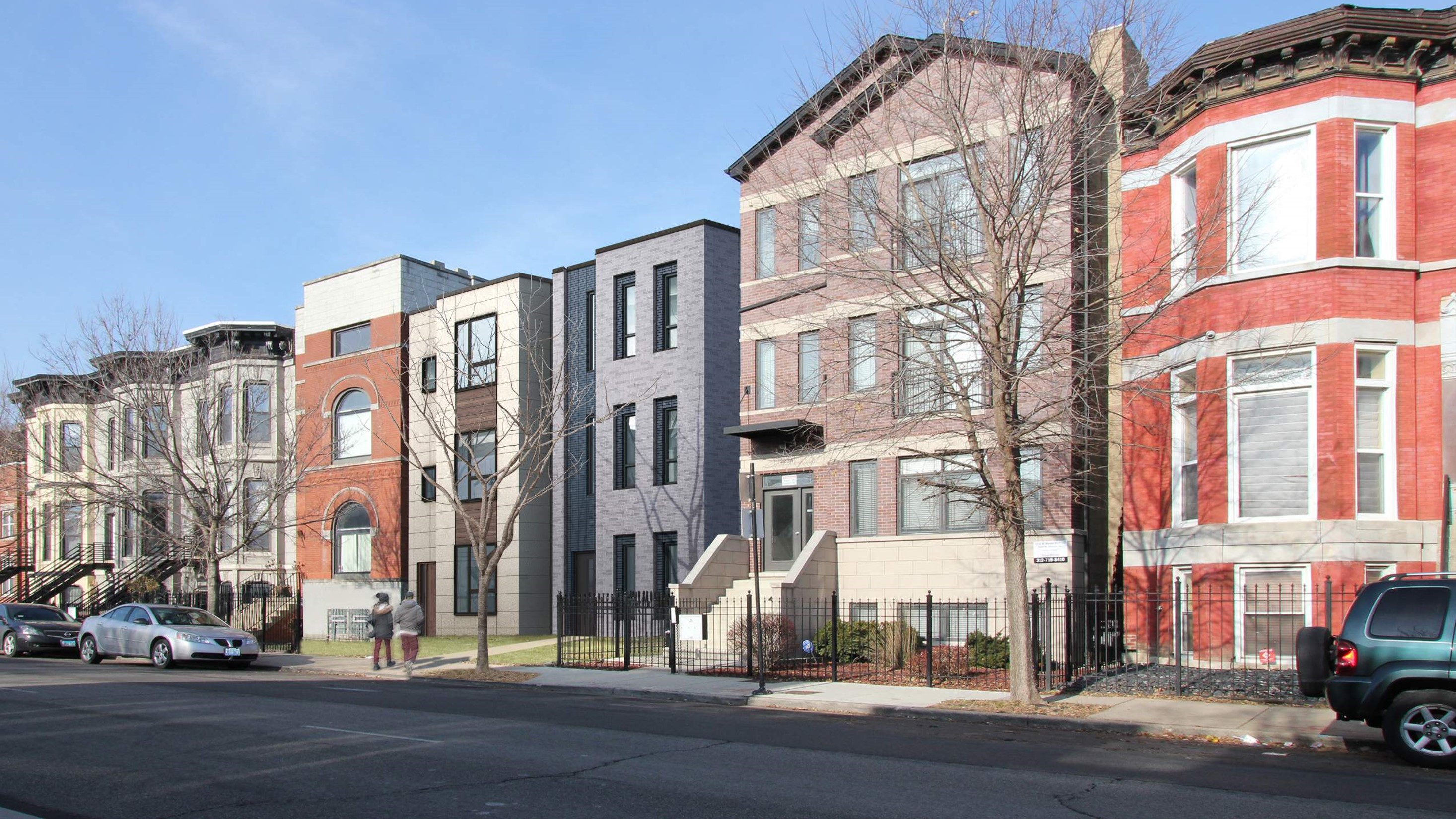
A 12-module, three-story residential walkup building in development is “getting a lot of traction,” says Skender Manufacturing President Pete Murray, formerly with medical device maker Welch Allyn and Guerdon Modular Buildings.
He and Chief Design Officer Tim Swanson, Assoc. AIA—a BD+C “40 Under 40” honoree (Class of 2017)—and newly hired CTO Stacy Scopano, formerly of Skanska and Autodesk, are leading Skender’s foray into industrial construction.
15 tips on how best to perform factory-based construction
1] Industrial construction requires 100% team buy-in.
“You have to bring in the right partners, both design and construction, and do it early. You can’t be shooting from the hip, and you have to have buy-in from all the parties to make prefab successful,” says Gopi OmRaju, Senior Project Manager, Medical University of South Carolina (MUSC), who oversaw the Shawn Jenkins Children’s Hospital & Pearl Tourville Women’s Pavilion project.
2] Industrial construction needs intense early budget programming and modeling.
Steve Wiley, Senior Project Manager, Robins & Morton, says his team spent more than a year on the MUSC hospital budget—“looking at the program, cutting scope, value engineering.” A team of trade partners tickled the Revit model for 14 months. All this early work paid off in streamlining the production schedule, he says.
3] Industrial construction can go beyond 3D.
At Prescient, the model ties in cost (4D) and schedule (5D). Laminated QR codes tell exactly when each piece was made, what it was made from, where it’s going, and when it will be shipped—“the whole life cycle of the piece,” says Todd Meckley, Prescient’s EVP of Design.
4] Industrial construction doesn’t mean that the architect and GC disappear.
“I don’t want us to be the architect or the GC,” says Magued Eldaief, Prescient’s CEO. “But we do have a platform that can make your job easier, and, by the way, make more money.” Responsibility for podiums, roofs, interiors, cladding, and other major components will still fall to the architect and GC. Says Meckley, “For us architects, it puts the work into the areas where we have expertise.”
5] Industrial construction doesn’t mean cookie-cutter design.
Prefabricators can’t stand it when critics assert that standardization of manufacturing processes necessarily results in “standard” buildings. “Manufactured building is about possibilities, not restrictions,” says Skender’s EVP of Design, Tim Swanson. “Modular creates more opportunities for high-design specifications, from façades to finishes.”
6] Industrial construction can soothe your labor headache.
Kevin Robinson, Operations Manager, Tech Air, the sheet metal contractor on the MUSC hospital project, says he originally planned for 85 workers on the job at peak, but his on-site manpower topped at 58, thanks to prefab. “You can train someone with two or three years’ experience, or even an entry-level person, for work in the warehouse,” he says.
Factory-based production helped electrical contractor M.C. Dean overcome the shortage of electricians in Charleston. “The warehouse became the place where we could train workers—first, working with the BIM model and spool drawings, then with the mechanics of electrical roughing and pipe bending, then rotating them into the field,” says Robins & Morton’s Wiley.
7] Industrial construction cuts shipping errors.
Tech Air’s Robinson says potential shipping errors that could have brought the MUSC job to a standstill—like the wrong ductwork module being shipped—were caught early. “The warehouse team would have figured out that error three weeks ahead of shipment,” he says.
8] Industrial construction often encourages innovative problem-solving.
Robins & Morton rolled in food trucks on level two of the hospital project so trades workers wouldn’t have to leave the site to grab something to eat. A pop-up store run by an outside retailer supplied consumables—safety glasses, tools, etc.—on the spot. “We didn’t have to send someone five miles to the nearest hardware store for duct tape,” says Tech Air’s Robinson.
Another innovation: Instead of co-locating the modeling team in one room, as is often the practice, Robins & Morton put everyone on a 24-hour GoToMeeting hotline. “If they had a question for the electrical or mechanical guys, they could ask it right then, no waiting,” says Robins & Morton’s Wiley.
One more: On Cypress Real Estate Advisors’ first project, the sheathing contractor couldn’t keep up with Prescient’s wall assembly, so the interior was exposed to weather infiltration.
In Cypress’s next project, Prescient worked with CFC Construction to develop a temporary waterproofing system for floor decking and prefabricated exterior wall panels with sheathing and windows, to guard against rain and snow.
“With this new process, we’re going to dry in our buildings under construction much faster,” says Cypress’s Chase Hill.
9] Industrial construction melds nicely with Lean.
The MUSC team used Lean practices—JIT delivery, daily standups, whiteboard crew meetings, 5S for cleanup and labeling—in the factory and on the construction site. “Lean definitely helped with prefab and productivity,” says MUSC’s OmRaju.
10] Industrial construction reduces waste on site.
All the cardboard, plastic, and shipping waste is removed at the factory. “There’s no clutter, no debris, plus you’re shipping just what you need, in smaller batches,” says Robinson.
11] Industrial construction saves time.
“We can assemble mechanical systems four times faster in a warehouse than we can in the field,” says Robinson. Says MUSC’s OmRaju, “We shaved probably 6-10 months off the job.”
12] Industrial construction allows you to work in tight urban infill sites.
“In Denver, there’s not a lot of land for the 200-unit projects we need to get our efficiencies,” says Chase Hill, Associate Director, Cypress Real Estate Advisors, whose current projects are on tiny parcels—0.4, 0.8, and 2.0 acres. Industrial construction helps overcome lack of laydown space and other site constrictions—a major reason why Hill pushed his company to use Prescient on all three Cypress jobs.
13] Industrial construction can ramp up fast.
You can start manufacturing as soon as the 3D model has been approved. No waiting for the podium to set. “You can work two months in advance,” says Robinson.
14] Industrial construction allows for flexible delivery.
To avoid disruption to two neighboring hospitals, all deliveries for the Charleston children’s hospital were scheduled from 5:30 p.m. to 6:00 a.m. “A lot of groundwork goes into deploying that strategy, and the subs have to be aware of it,” says Robins & Morton’s Wiley.
15] Industrial construction means the factory has to be part of the jobsite.
Robins & Morton’s warehouse superintendent, Rusty Bratcher, held standup meetings and production updates with 20 to 30 manufacturing workers at a time, just as if they were at the hospital site, 15 miles away. “You have to treat the warehouse like it’s part of the job,” says Wiley.
Related Stories
Modular Building | Jul 23, 2018
Offsite construction: Why it’s important for the survival of your firm
The industry is approaching its “heart attack moment,” with so many large projects that are chronically late, over budget, and unprofitable, writes FMI Capital Advisors’ Michael Swistun.
Accelerate Live! | Jun 24, 2018
Watch all 19 Accelerate Live! talks on demand
BD+C’s second annual Accelerate Live! AEC innovation conference (May 10, 2018, Chicago) featured talks on AI for construction scheduling, regenerative design, the micro-buildings movement, post-occupancy evaluation, predictive visual data analytics, digital fabrication, and more. Take in all 19 talks on demand.
| Jun 11, 2018
Accelerate Live! talk: The smart jobsite — Predictive visual data analytics for proactive project controls
In this 15-minute talk at BD+C’s Accelerate Live! conference (May 10, 2018, Chicago), a trio of experts in predictive visual data analytics presents how design-build giant Clayco has leveraged this technology to achieve production efficiency on several construction sites.
| Jun 11, 2018
Accelerate Live! talk: Design innovation at Adrian Smith + Gordon Gill Architecture
In this 15-minute talk at BD+C’s Accelerate Live! conference (May 10, 2018, Chicago), AS+GG’s Anthony Viola takes us behind the magic curtain to illuminate the firm’s methods for nurturing design innovation.
| Jun 11, 2018
Accelerate Live! talk: ‘AEC can has Blockchains?’
In this 15-minute talk at BD+C’s Accelerate Live! conference (May 10, 2018, Chicago), HOK’s Greg Schleusner explores how the AEC industry could adapt the best ideas from other industries (banking, manufacturing, tech) to modernize inefficient design and construction processes.
| Jun 11, 2018
Accelerate Live! talk: How advanced digital fabrication techniques are driving design innovation
In this 15-minute talk at BD+C’s Accelerate Live! conference (May 10, 2018, Chicago), SOM’s Lucas Tryggestad and Kyle Vansice present the firm’s 3D-printed building project and explore how digital fabrication is pushing design innovation.
| May 30, 2018
Accelerate Live! talk: Seven technologies that restore glory to the master builder
In this 15-minute talk at BD+C’s Accelerate Live! conference (May 10, 2018, Chicago), AEC technophile Rohit Arora outlines emerging innovations that are poised to transform how we design and build structures in the near future.
| May 30, 2018
Accelerate Live! talk: Why the AEC industry must adapt to the Internet of Things boom
In this 15-minute talk at BD+C’s Accelerate Live! conference (May 10, 2018, Chicago), building systems expert Jeff Carpenter explores established and emerging IoT applications for commercial and institutional buildings, and offers a technology roadmap for navigating the IoT landscape.
Building Technology | Mar 1, 2018
Small construction businesses will continue to lag other sectors in tech spending this year
A survey of 800 companies found tepid interest overall in investing in “big data.”
Big Data | Jan 5, 2018
In the age of data-driven design, has POE’s time finally come?
At a time when research- and data-based methods are playing a larger role in architecture, there remains a surprisingly scant amount of post-occupancy research. But that’s starting to change.


